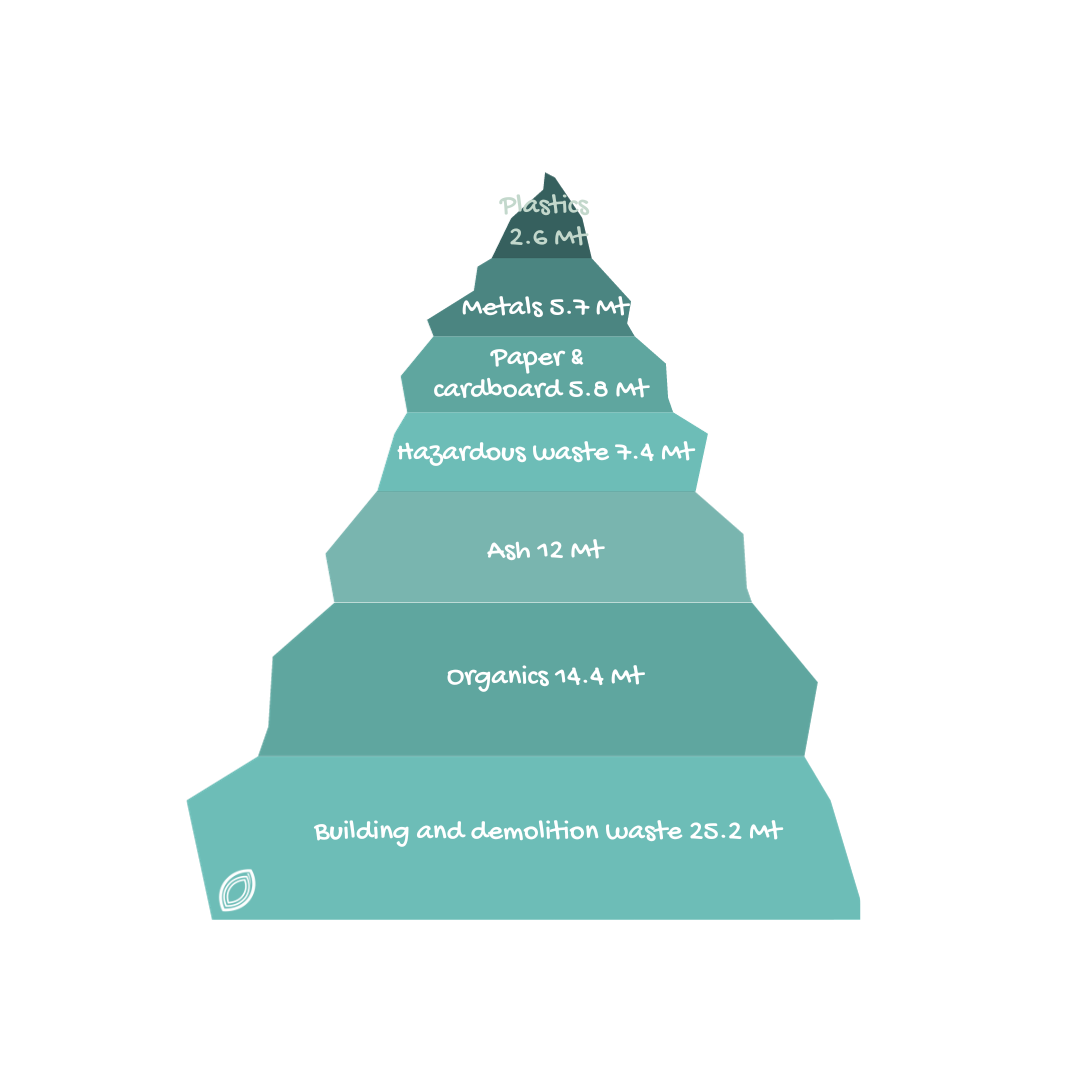The Big Picture
For the first iteration of The Sustainability Series, I want to step back to take a landscape view of the big picture when it comes to waste
Every two years in Australia, a National Waste report is released, providing an update on how our waste data is tracking.
Broken down simply, Australia’s waste is comprised of:
18% (14 mega tonnes Mt) of household waste/local government waste collection
38% (29 Mt) of construction and demolition waste
43% (32.8 Mt) of commercial and industrial waste including ash from coal electricity generation plants
It fascinates me how individuals can get very wrapped up in their own waste generation, witnessed in their own bins. I believe we, as a collective society, fail to see the bigger picture.
When we talk about how we want to make a better impact on the planet, some of the options I hear are:
‘I’m sending off my blister packs for recycling’
‘I wish they would recycle take away coffee cups here’
And the classic ‘I’m keeping my soft plastics for when that starts again…’
These current beliefs come from a similar vein. 15+ years ago when I started working in the waste management industry, the introduction of a recycling bin was perceived as the ‘golden ticket’ of sustainable living. ‘My recycling bin is overflowing!’ We know we can no longer recycle our way out of our waste conundrums.
These are all downstream solutions to our waste when really we should be thinking upstream for prevention, which I am touching on in later posts.
Back to big picture thinking, let’s look at the situation in our actual waste generation and break it down further.
In 2020-21, Australia generated 75.8 million tonnes of waste
Building and demolition waste from construction (25.2 mega tonnes),
Organics aka food waste, garden waste (14.4 mega tonnes),
Ash from Commercial and Industrial waste such as coal electricity generation (12 mega tonnes),
Hazardous waste, mostly contaminated soils (7.4 mega tonnes)
Paper and cardboard (5.8 mega tonnes)
Metals (5.7 mega tonnes)
Plastics (2.6 mega tonnes)
If these wastes were all in a pile, here is roughly how each item is represented:
The bright side of this is that in the most recent National Waste report, the resource recovery rate of our ‘wastes’ sat at 63%, that is our recycling, reuse and energy recovery.
The point is we put a lot of energy and effort focusing on the top of the pile items, which are the smaller things in the whole picture.
Not included in the above figures is mining waste. Waste from mining, mineral processing, fisheries and agriculture was excluded from the scope of the National Waste Report. However, it did provide estimates of the amount of waste generated by these sectors.
In 2020-21, mining produced whopping 620 mega tonnes of waste, 44 times the quantity of household waste (14 mega tonnes)! Waste from mining activities is made up of a slurry of pulverised rock and water, of which most was estimated to have been deposited in tailing dams.
National Targets
In 2019, the Federal Government has set a variety of targets as part of the National Waste Policy Action Plan. These include
Target 1. Ban the export of waste plastic, paper, glass and tyres, commencing in the second half of 2020
Target 2. Reduce total waste generated in Australia by 10% per person by 2030
Target 3. 80% average resource recovery rate from all waste streams following the waste hierarchy by 2030
Target 4. Significantly increase the use of recycled content by governments and industry
Target 5. Phase out problematic and unnecessary plastics by 2025
Target 6. Halve the amount of organic waste sent to landfill by 2030
Target 7. Make comprehensive, economy-wide and timely data publicly available to support better consumer, investment and policy decisions
Where should we put our efforts?
When a program boasts about bans on straws or pizza box risers (which make a perfect doll’s table in the kids doll house btw) or cardboard bread clips or blister packs, is this really the way to achieve our national waste target of 80% by 20301? Hell no! It aims to reduce litter (don’t step on an upside-down dolls table!) but if we really want to make an impact, we need to look at the big picture items and the big emitters to decrease greenhouse gas emissions.
And the real kicker is that the state of New South Wales in Australia is on track to run out of landfill space 2028. That is, no new landfills to be built! Extensions yes, however with a lot of caveats.
Tackle the big emitters and space takers first. That is organics, commercial and industrial, commercial and demolition wastes
https://www.dcceew.gov.au/environment/protection/waste/national-waste-reports/2022




